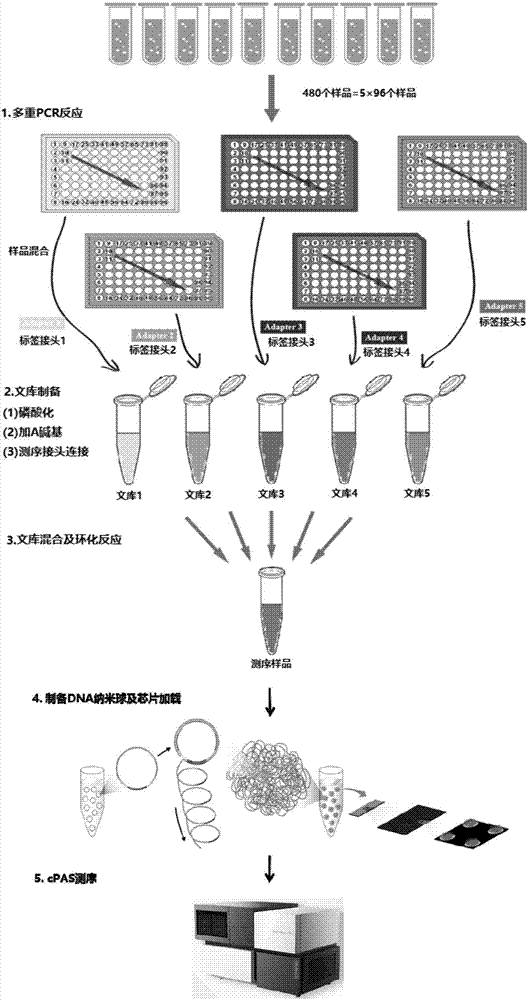Library building kit for detecting hereditary deafness genes and application
A kind of hereditary deafness, kit technology, applied in the direction of chemical library, biochemical equipment and method, microbial determination/inspection, etc., can solve the problem of erroneous results, probe binding error, probe position mutation, etc., to reduce detection Cost, accurate and reliable test results
- Summary
- Abstract
- Description
- Claims
- Application Information
AI Technical Summary
Problems solved by technology
Method used
Image
Examples
Embodiment 1
[0051] Example 1: Primer Design
[0052] 1. Primer design specifically includes the following steps:
[0053] 21 mutation sites of GJB2, GJB3, SLC26A4 genes and 12s rRNA gene related to hereditary deafness were selected as detection sites, namely: 35delG, 167delT, 176-191del16, 299_300delAT and 235delC of GJB2 gene, 538C> of GJB3 gene T and 547G>A, 281C>T, 589G>A, IVS7-2A>G, 1174A>T, 1226G>A, 1229C>T, 1975G>C, 2027T>A, 2162C>T, 2168A>G of SLC26A4 gene With IVS15+5G>A, 1494C>T, 1555A>G, 1095T>C of mitochondrial genes. Use primer design software to design PCR amplification primers for the above gene loci, and the length of the amplification primers is about 20 bases. Use the software to design and evaluate the sample tag sequence. The tag sequence contains 7 bases. When designing the tag sequence, avoid sequences with high similarity with the sequencing primers and PCR amplification primers with tags to form hairpin structures or dimers. level structure. See Table 1 for the ...
Embodiment 2
[0059] Example 2 Construction of library and sequencing
[0060] In this example, 24 clinical DNA samples whose information on the above-mentioned sites to be detected (Sanger sequencing detection) is known (Sanger sequencing detection) were detected, numbered 1-24, of which samples 1-21 were mutation-positive samples, and samples 22-24 were mutation-positive samples. Mutation-negative samples. The principle of the detection is as figure 1 As shown, the detection process is as follows figure 2 shown.
[0061] Specifically include the following steps:
[0062] 2. PCR amplification reaction
[0063] 2.1 Prepare the PCR amplification reaction mixture in a suitable centrifuge tube according to the ratio in Table 3, mix well, and distribute 18 μL per reaction well on ice into a 96-well PCR reaction plate;
[0064] Table 3 PCR amplification reaction mixture formula
[0065]
[0066]
[0067] 2.2 Use an eight-channel pipette to pipette 2 μL of the PCR reaction primers st...
PUM
 Login to View More
Login to View More Abstract
Description
Claims
Application Information
 Login to View More
Login to View More - R&D
- Intellectual Property
- Life Sciences
- Materials
- Tech Scout
- Unparalleled Data Quality
- Higher Quality Content
- 60% Fewer Hallucinations
Browse by: Latest US Patents, China's latest patents, Technical Efficacy Thesaurus, Application Domain, Technology Topic, Popular Technical Reports.
© 2025 PatSnap. All rights reserved.Legal|Privacy policy|Modern Slavery Act Transparency Statement|Sitemap|About US| Contact US: help@patsnap.com



